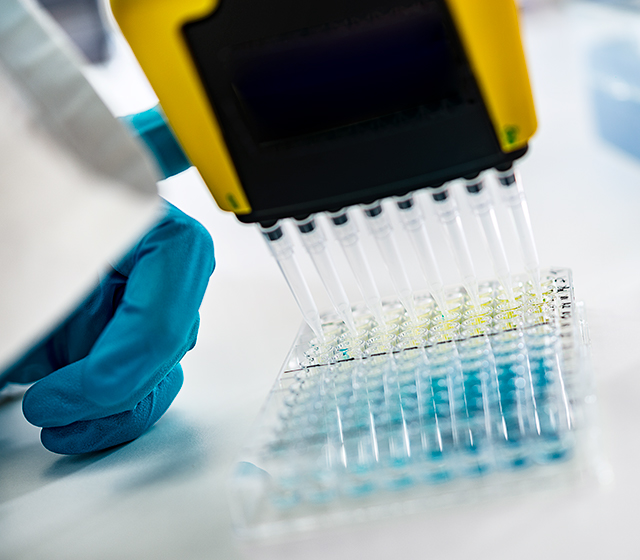We use cookies to offer you the best experience on our site. You can find out more about the cookies we use or disable them in the Cookie settings
PAR & Thrombin Peptides
Proteinase-Activated Receptors
PARs or Protease Activated Receptors function as receptors for Thrombin. They belong to the seven transmembrane G-protein coupled family of receptors.
These receptors are activated when the amino terminus of the receptor is cleaved by specific serine proteases - thrombin (PAR-1, 3 and 4) and trypsin (PAR-2).
These G-protein coupled receptors (GPCR) are seen as contributors to different pathways including those of the circulatory and cardiovascular system, nervous system, gastrointestinal system, airways and also the skin. They can regulate many biological processes that are critical in disease, including coagulation, proliferation and survival, inflammation, neurotransmission and pain.
While endothelial PARs help in the regulation of vascular tone and permeability, those in smooth muscles mediate contraction, proliferation and hypertrophy. Four PARs are known in mice and humans with specific activation modes. Human PAR1, PAR3, and PAR4 can be activated by Thrombin. PAR1 and PAR4 are direct thrombin receptors.
Our thrombin & related peptides group includes PAR peptides and their agonists/antagonists that are relevant to the study of sequence-specific models of thrombin receptor activation and in turn, their modulatory roles in cardiovascular and circulatory systems.
Thrombin, a pro-, and an anti-coagulant
Thrombin is a serine protease of the chymotrypsin family and is produced by the enzymatic cleavage of two sites on prothrombin (its inactive precursor) by activated Factor Xa.
Thrombin has opposing roles in hemostasis in that it acts as both a pro-coagulant as well as an anti-coagulant.
As a pro-coagulant, thrombin converts fibrinogen into insoluble fibrin which anchors platelets to the wound/lesion site to initiate the wound healing process.
As an anti-coagulant, thrombin functions to down-regulate the coagulation process as it (fibrin-bound from its pro-coagulant property) complexes with thrombomodulin present on the endothelial cell surface and activates protein C, an anticoagulant proteinase.
Synthetic thrombin receptor peptides or thrombin receptor activating peptides (TRAPs) generated by thrombin’s proteolytic activity are considered full agonists, which are studied in relation to thrombin signaling, platelet activation, protein phoshorylation etc.
References
- Dudina, T. et al. Biochem. (Moscow) 67, 85 (2001)
- Shirato, K. et al. Nephrol. Dial. Transplant. 18, 2248 (2003)
- Samis, J. et al. Blood 95, 943 (2000)
